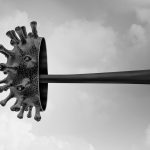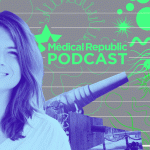Speculation has come roaring back as to whether this pandemic started with a zoonotic event or a highly avoidable accident.
It seems like aeons ago that the science was united in scoffing at Trump et al. for suggesting China had designed SARS-CoV-2 in a lab to wreak havoc on the world.
But now, the idea of a lab-grown virus – albeit one that escaped by accident rather than being deliberately unleashed – seems to have come in from the fringe. So what happened recently that has sparked such a resurgence?
Well let’s take a step back. In July last year we reported on the theory that the virus was an intentionally designed bioweapon, a story that is still being clicked hundreds of times a week on almost a year later. The scientific community had fairly uniformly dismissed the idea, pointing to features of the virus that suggested it had the all hallmarks of having evolved naturally.
And it is worth noting at this point that the scientific sentiment is still overwhelmingly in favour of natural origins. As Liam Mannix pointed out in the Sydney Morning Herald, journalists have had a troubled history of presenting “both sides” of scientific debate as having equal merit, such as with climate change, when the scientific support far more strongly backs one side.
Much of the new fervour around the lab leak theory has come from journalists rehashing old information and conspiracy theories, without much new evidence and with little background in either science or China.
There was also the WHO expedition to Wuhan this year which was unable to conclusively find a natural origin. Microbiologist Professor Dominic Dwyer, the only Australian member of the team, speaking at a recent conference, said the Huanan wet market presented perfect conditions for a zoonotic event and confidently dismissed the bioweapon origin, but glossed over the intermediate possibility of an accidental lab escape.
Moreover, the question of the origins of SARS-CoV-2 isn’t simply a dispassionate scientific question. It is subject to politically motivated disinformation, from multiple actors, and is catnip for those seeking to attack China, as well as people of Asian descent.
What’s actually new?
About a week ago, US President Joe Biden said he had asked his intelligence agencies to “redouble their efforts” to find the origin of the coronavirus.
He said the intelligence community was conflicted and debating whether the virus was an accidental leak from a scientific research facility, namely the Wuhan Institute of Virology, or whether it naturally spilled over from animals.
“As of today, the US intelligence community has ‘coalesced around two likely scenarios’ but has not reached a definitive conclusion on this question,” the President said.
Some prominent scientists who publicly proclaimed that the coronavirus originated naturally have since gone on the record to say that they are open to the idea that it may have come from a biosecurity leak.
In mid-May, 18 researchers had taken to Science to call for the lab leak to be investigated more thoroughly. “Theories of accidental release from a lab and zoonotic spillover both remain viable,” they wrote.
Ten days earlier, the Bulletin of the Atomic Scientists – which is not exactly The Daily Mail – had published a lengthy piece by Nicholas Wade strongly pushing the story that SARS-CoV-2 was a result of the the “gain-of-function” research going on at Wuhan (in which viruses are modified and tweaked to make them more transmissible or virulent in the hopes of understanding future threats better).
The piece was shared widely, reigniting speculation and pushing the debate into the mainstream, leading to a flurry of news stories.
But ultimately we still don’t know where the virus came from.
The prevailing theory at the start of the pandemic was that SARS-CoV-2 came from an animal, perhaps crossed into another animal at a wet market, and at some point spilled over into humans.
Research published in the NEJM in March 2020 found that of the first 425 confirmed cases, only half were linked to the seafood market. This suggested human-to-human transmission was happening since the middle of December 2019, said the authors.
It’s been more than a year of concentrated effort on one calamity, and we’re not much closer to understanding where exactly the virus came from. We haven’t found a reservoir of the SARS-CoV-2 in any animal populations, which would be a pretty good sign that it came from nature and was inadvertently picked up by humans.
But do we have any evidence that it came from a lab?
The short answer is no. Instead, people have laid out a series of circumstantial events that point to the Wuhan Institute of Virology, which studies coronaviruses and collects bat samples to analyse.
In May, the Wall Street Journal reported that three people working at the institute became ill and were hospitalised in November 2019. On this point, it’s worth noting that this is wintertime, and many maladies are treated in hospitals in China, so it’s not hard to believe that people came down with a seasonal flu or cold.
The source for this claim was also vague: an undisclosed source from the Trump administration who claimed to have read an intelligence document about it.
Shortly after, the Journal published another piece that claimed that Chinese authorities barred a journalist from going to a derelict copper mine where six miners fell mysteriously ill with a pneumonia-like disease in 2012. The men, three of whom died from the illness, were cleaning the area of bat guano.
As a result, researchers from the Wuhan Institute of Virology collected and stored more than 1300 samples and found almost 300 coronaviruses – one of which was RaTG13, a coronavirus that has a 96% similarity with SARS-CoV-2.
Just this week, some outlets have jumped on emails between Dr Anthony Fauci and virus genomics researcher Professor Kristian Andersen from 31 January, 2020, that discuss the possibility of the virus being engineered.
“The unusual features of the virus make up a really small part of the genome (<0.1%) so one has to look really closely at all the sequences to see that some of the features (potentially) look engineered,” said Professor Andersen, in emails acquired by Buzzfeed.
But rather than these emails being a sign of a “massive cover-up”, as Sky News journalist Sharri Markson exclaimed, Professor Andersen repeatedly stressed on Twitter that his subsequent analysis indicated it wasn’t engineered.
“As I have said many times, we seriously considered a lab leak a possibility,” he said. “However, significant new data, extensive analyses, and many discussions led to the conclusions in our paper.
“What the email shows is a clear example of the scientific process.”
Whoops …
Even if the virus wasn’t engineered, is it possible that the researchers were just studying viruses that they found in mines or in caves elsewhere and one accidentally leaked out?
It’s remarkably coincidental that the outbreak of a coronavirus pandemic occurred in the exact city that was home to the only biosafety level 4 (BSL-4) research lab in all of China. Also unusual is that SARS-CoV-2 was first found in humans in a major city, and not in regions close to wilderness where its other relatives have been found.
Only around 50 labs in the world operate with this level of biosecurity precautions, which are reserved for researchers handling dangerous specimens that pose a high risk of disease and aerosol-transmitted lab infections.
BSL-4 laboratories are routinely tested for their compliance with safety and security protocols, with funding contingent on meeting such stipulations.
Nevertheless, there is historical precedence of biosecurity breaches from research institutes around the world, with SARS, MERS, smallpox, Ebola and live anthrax all having been mishandled or leaked.
In April 2020, The Washington Post reported that as far back as 2017, US diplomats had warned the government about possible security risks at the Wuhan Institute of Virology. The Wuhan lab’s own scientists had reported “a serious shortage of appropriately trained technicians and investigators needed to safely operate this high-containment laboratory”, according to the Post.
In late 2019, another researcher at the Institute wrote in a scientific journal that “the maintenance cost is generally neglected; several high-level BSLs have insufficient operational funds for routine yet vital processes. Due to the limited resources, some BSL-3 laboratories run on extremely minimal operational costs or in some cases none at all.”
Nevertheless, others familiar with biocontainment note that it is not uncommon for infractions to be noted at labs, and this is no smoking gun.
Proponents of the lab leak theory also noted that in her interview with Science magazine, top bat coronavirus researcher Professor Shi Zhengli said that some of the coronavirus research at the Wuhan Institute of Virology was done at the less secure BSL-2.
Nevertheless, in that same interview, Zhengli said it was impossible that any staff could have been infected while collecting, sampling or handling bats. She also noted that there had been no leaks or personnel infections to date, and the lab was monitored by biosafety management personnel. “Every year, the lab’s facilities and equipment must be tested by a third-party institution authorised by the government,” she told Science. “Only after passing the test can the lab continue to run.”
Lying down with dogs
Many speaking about the potential of a lab leak say they don’t necessarily believe the virus did come from a lab, but that it is not so far-fetched that it should be off the table. Like the natural origin hypothesis, it needs to be explored whole-heartedly and transparently until we get to the bottom of things
“Knowing how COVID-19 emerged is critical for informing global strategies to mitigate the risk of future outbreaks,” said the 18 authors calling for an investigation into its origins.
They argued that the investigation of the lab as a possible origin had not been explored by the WHO or other medical bodies sufficiently enough yet.
“The information, data, and samples for the [WHO] study’s first phase were collected and summarized by the Chinese half of the team; the rest of the team built on this analysis,” they wrote.
“Although there were no findings in clear support of either a natural spillover or a lab accident, the team assessed a zoonotic spillover from an intermediate host as “likely to very likely,” and a laboratory incident as “extremely unlikely”.
Each theory was not given a balanced consideration, they wrote. “Only 4 of the 313 pages of the report and its annexes addressed the possibility of a laboratory accident.”
Despite the WHO’s conclusions that the origins were much more likely to be natural, the organisation’s Director-General Tedros Ghebreyesus later said that the report did not sufficiently consider evidence around a laboratory accident, and left the option of further investigation of that on the table.
Then why are some scientists so resistant to exploring the lab leak as a viable alternative?
Some of the reluctance may be attributed to the fear of tainting one’s career by indulging a perceived conspiracy theory – especially one promoted by Donald Trump.
More plainly, many of those advocating for the lab leak theory are from the far right, and it is a convenient narrative for those who would wish to foster anti-Chinese sentiment, whether purely political or racial.
There are also political reasons to shape the public’s perception of how the pandemic was managed in its early stages and who is ultimately to blame for the millions of deaths.
“It was the ‘incompetence of China,’ and nothing else, that did this mass Worldwide killing,” the former US president tweeted in May last year.
On the other hand, if this pandemic did originate from a lab, it raises serious questions around this scientific approach. Firstly, what is the utility of doing gain-of-function research on viruses, if in the quest to prevent or mitigate a pandemic we actually start one?
Can we institute more checks and balances on labs that research such potentially dangerous pathogens? Or must we accept a certain amount of risk in all of these endeavours?
As yet, we don’t have conclusive proof for either origin theory.
A zoonotic origin remains appealing, simply because multiple previous pandemics have begun that way, including the 1918 influenza pandemic, Ebola, MERS and SARS.
The problem is that if SARS-CoV-2 is anything like other zoonotic diseases, it may take years or decades to find out which animal it crossed over from. Or we may never know.
It’s also worth asking what we really get out of finding out the exact origins of the virus. How will our management of this pandemic or future ones be improved? And what harm will result: will this sour relations with China, or amplify race-based violence?
Seeking to pin the blame on individuals or organisations for this pandemic may also distract us from the very real modifiable factors that place us at risk of a new pandemic – not all of them as granular as what goes on at a wet market. We know that climate change, environmental degradation and human encroachment on natural spaces increases this peril. These are things that we can change, and need to, regardless of whether this specific pandemic leaked from the wild or from a lab.





